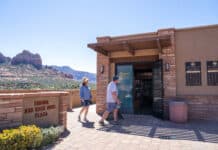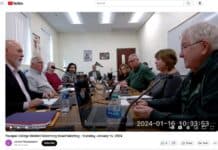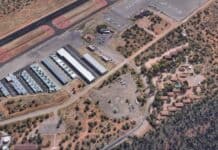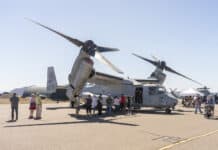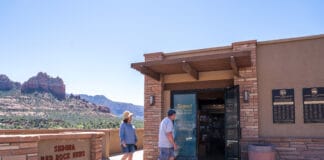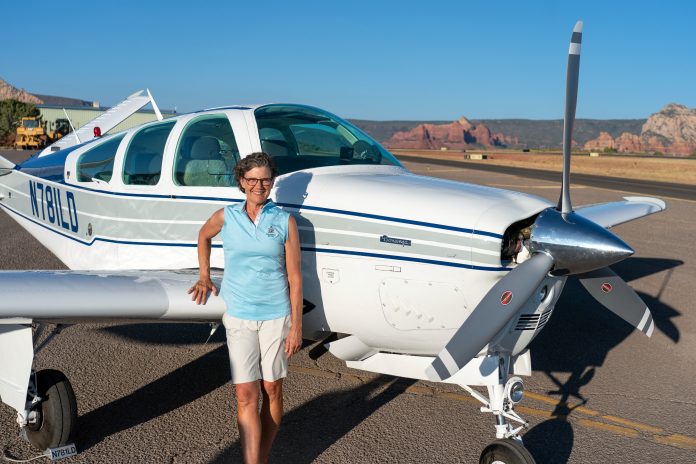
Pilots at the Sedona Airport tout skilled peers to visitors, pointing them out with admiring nudges.
Frequently, these are pilots with special bona fides, like being an ex-commercial pilot. These deep-resumed pilots have something of an aura about them. I look at it as an amateur softball team that has a retired Major League Baseball player on it; the team’s going to brag about playing with them.
Betty Uhrig is one of Sedona Airport’s retired major leaguers. At least three people at the airport nudged me and suggested I interview Uhrig. And that’s saying something at Sedona, where a lot of accomplished aviators have chosen to alight.
Uhrig is something of a pilot’s pilot because she has thousands of flight hours in two renowned aircraft: The Lockheed C-130 Hercules and the Gulfstream business jet. She also has the distinction of flying VIPs for the U.S. Coast Guard and the Chevron Corporation.
In the Coast Guard, she was assigned to fly the commandant, the branch’s highest ranking officer, along with U.S. senators and presidential cabinet members. After retiring from the Coast Guard after 24 years, she became a pilot and eventually general manager of aviation for Chevron, flying company leaders to over 100 countries.
If you’re not a pretty darn good pilot, I doubt you would last long flying executives who could have you transferred with a nod of the head.
But before she was entrusted to fly VIPs, she racked up 8,000 hours in the C-130 performing the bread and butter missions of the Coast Guard, like search and rescue, and patrolling for drug trafficking and illegal fishing.
The C-130 is the Clydesdale workhorse of airplanes. It’s a big, muscular transport plane that has been able to do just about any military, scientific or humanitarian job it’s been called on to do. The National Hurricane Center flies it into hurricanes to collect weather data.
The entire back end of the plane can open for loading heavy cargo like trucks, tanks or pallets of food.
“[The C-130] is very versatile. You could land anywhere, do anything, haul anything,” Uhrig said. “I knew that plane like the back of my hand.”
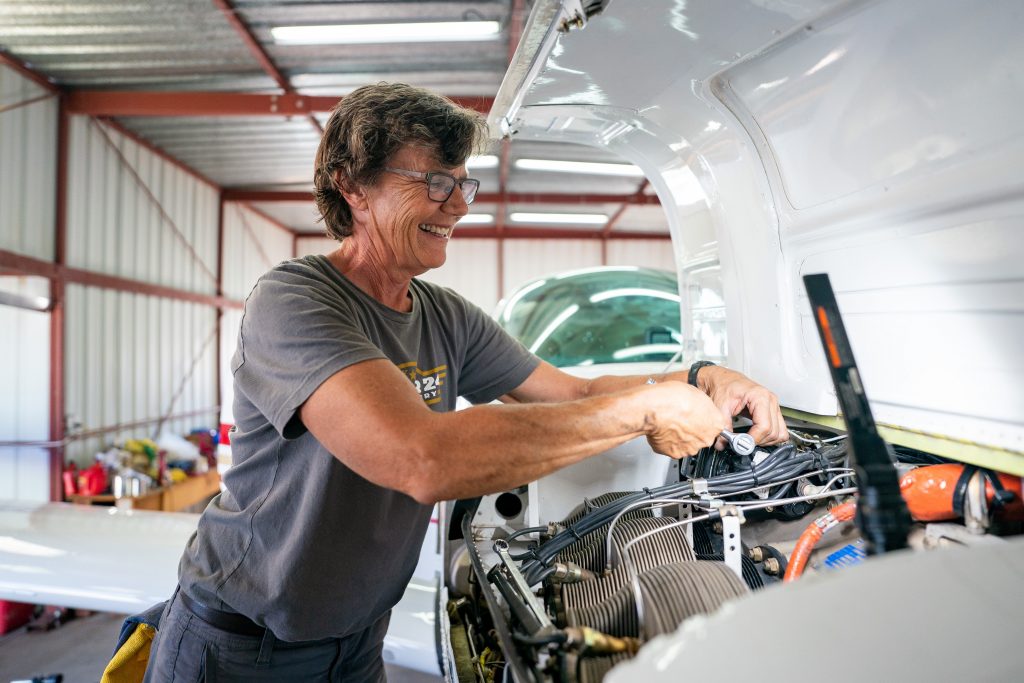
But Uhrig also speaks with admiration of Gulfstream jets, the planes she used later in her career to ferry leaders across the globe.
If the C-130 is a Clydesdale, then the Gulfstream is an Arabian — the transportation of choice for the well-heeled and heads of state.
The Gulfstream model that Uhrig retired on, the G-550, made by Georgia-based Gulfstream Aerospace, can fly from Paris to Honolulu in a single bound and boasts a top speed of Mach 0.885, or 679 mph.
“You’re going up to 50,000 feet, you’re above the weather, above every other airplane, you’re just — fast,” Uhrig said of flying a Gulfstream. “There’s something to be said for all of that technology.”
Uhrig’s experience with marquee airplanes hasn’t lessened the affection she feels for her current stead one iota: A four-seat Beechcraft V35B Bonanza she bought in retirement and keeps in a hangar at Sedona Airport. One point during the interview she whipped out a picture of the Bonanza parked at Jackson Hole, Wyo., a few months earlier, craggy mountains in the background.
“I love my airplane,” Uhrig said several times, adding that the Bonanza is “made like a truck and they handle beautifully.”
Uhrig is part of a group of pilots at Sedona Airport that flies every Sunday morning to different airports in the region for breakfast. When the coronavirus pandemic struck and restaurants paused operations, the group continued their weekly outings, but switched to picnic-style breakfasts.
One highlight of the year for Uhrig is an annual fly-in to the Bar-10 ranch, an outfit in a remote section of the North Rim, close to the Grand Canyon-Parashant National Monument. This is in the “Arizona Strip,” the section of Arizona cut off from the rest of the state by the Colorado River and the Grand Canyon. Though not terribly far in air miles, it takes quite an effort by car, about eight hours — but much easier in a plane.
Uhrig said that the thing she likes best about flying is the freedom. “The freedom to go where you want, when you want.”
She did just that on her birthday this year, when she flew to the Grand Canyon. This is just one of the wonders of Northern Arizona for Uhrig.
“There’s a lot of neat scenery in Arizona. This is one of the prettiest places in the world,” Uhrig said.
That’s saying a lot for someone who has lived in 22 cities and flown patrols around the Hawaiian Islands, Alaska and the South Pacific.
A Pioneer for the Military
In researching this story, I watched the Discovery Channel’s “Wings” episode about the C-130, and I noticed something: There was just one woman featured in the hour-long program, a crew member on the Hurricane Center’s C-130.
One reason for that is that women could not serve as pilots or crew members in the military until the mid-1970s.
Uhrig was the first female fixed wing crew member in the Coast Guard, signing up for avionics just days after aviation positions opened to women.
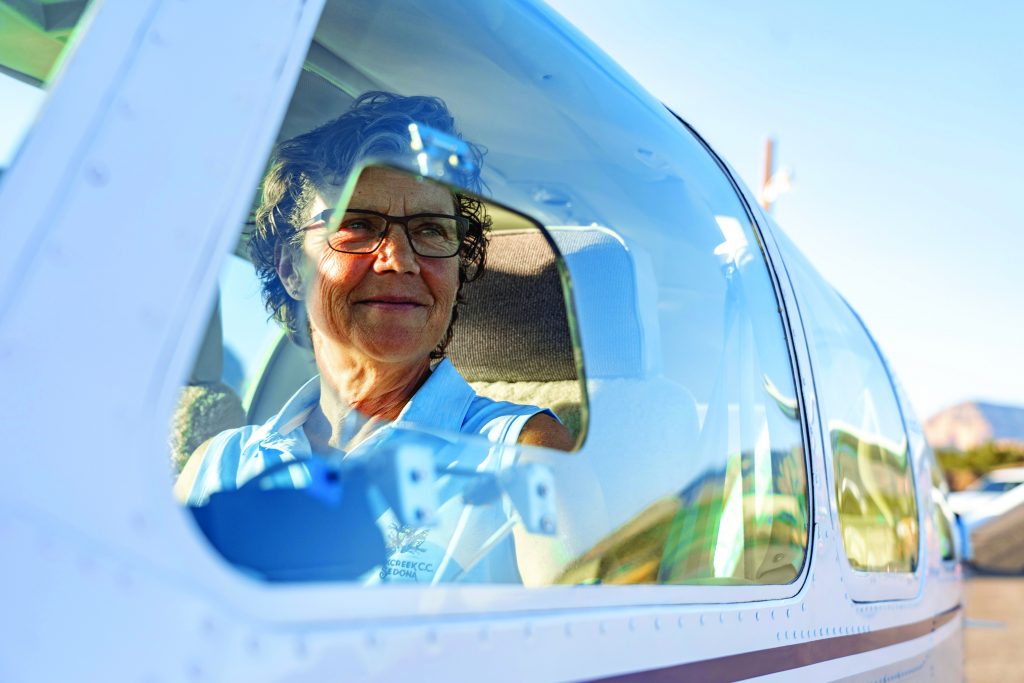
From there, she rose steadily, despite the misgivings of some male aviators who had never seen women fly and crew planes.
After finishing training, she requested to work on helicopters but was told women weren’t being put on helicopter crews because the maintenance work involved too much heavy lifting, so she was assigned to fixed wings.
“Which is ironic because the first piece of gear I had to work on … was a TAC-AM — it’s navigation equipment, and it’s under the belly of the airplane, and it weighs 70 pounds,” Uhrig said.
“So I’m laying back there undoing all the screws and then it finally gets to the point where I got to lift this heavy box down, and I’m not super strong but I’m pretty strong for a girl, and I look over … and there’s probably the entire air station, there had to be at least 50 guys lined up watching me. ‘Ok, I get it. I’m doing this,’ and I did it, and they never gave me crap after that.”
Uhrig worked with supportive colleagues, but she also heard “off-handed things,” and dealt with pilots who wouldn’t fly with her until she proved herself. A pilot at Chevron requested to never fly with her.
That pilot retired after a few years while Uhrig went on to become the first woman chief pilot and then general manager of Chevron’s fleet.
She’s racked up a number of firsts in her flying career, including first female crew member on a fixed wing aircraft, first female pilot at two Coast Guard stations — San Francisco and Sacramento — and a member of the first all-female C-130 crew.
For all this, she was inducted in the Women in Aviation’s Hall of Fame in 2019.
In an interview with the U.S. Department of Defence media service following her induction, Uhrig said, “I never planned any of it. It was never my goal to be the first. I was just going after something that I really wanted to do and it worked out well. I was the first female at a lot of places. I think I opened some guys’ eyes.”
A pattern in Uhrig’s stories is that when there was a promotion or exciting opportunity in front of her, self-doubt didn’t seem to factor as strongly it would for the average person; her natural impulse seemed to be to jump in and not overthink it.
That is also how she ended up in the Coast Guard at 17. She was a Navy kid raised mostly in Newport, R.I. In 1976, Operation Sail’s Grand Parade of Sailing Ships came to Newport as part of the U.S. bicentennial celebration. The Grand Parade included 16 tall ships for different countries.
“In high school I was taking German, and they needed some interpreters for the Gorch Fock, which was the German tall ship,” Uhrig said.
Apparently uninitiated by the prospect of translating for a crew of German sailors on an official mission, Uhrig’s response was, “Yeah, I could speak a little bit of German.”
While doing the translating, she partied with the crew of the Eagle, America’s tall ship in the Grand Parade, and the crew of the Eagle told her all about the Coast Guard.
“I went and signed up, like, the next day,” Uhrig said.



